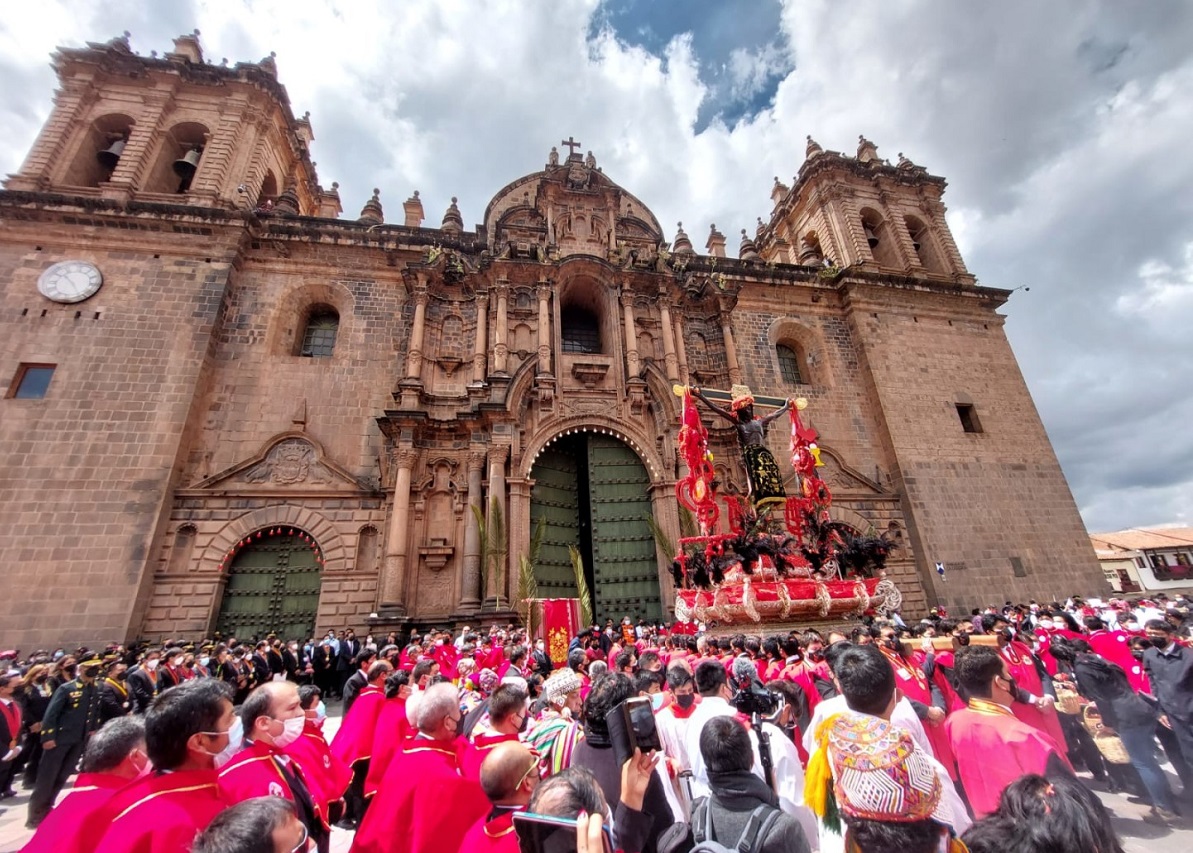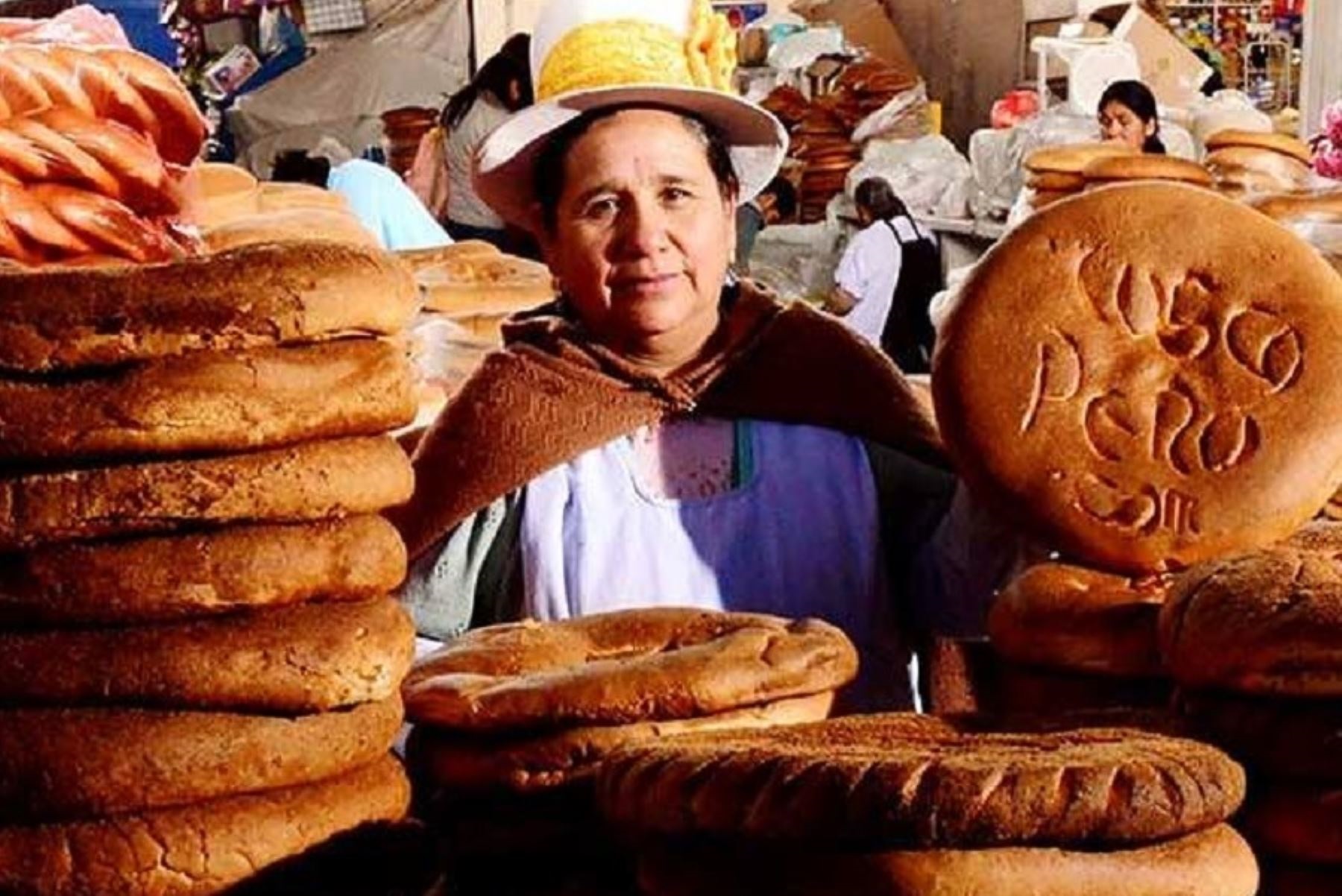
Cusco is not only the most famous tourist destination in Peru, but also one of the most important in America. Each year, around one million tourists come from abroad to visit the "Navel of the World" and its surroundings. But Cusco is more than the main Square, Ollantaytambo, Pisac, and Machu Picchu. The Imperial City gives us fascinating and unique things. We invite you to discover with us the 7 Curiosities of the Imperial City of Cusco.
The cultural appropriation of certain beliefs, especially when it comes to religious works, gives a special flavor to a well-known story. This is the case of the canvas of the Last Supper in the Cathedral of Cusco. We have the classic elements of the Last Supper, but clearly, it seems that the feast was given in Cusco. In the painting, you can see chili peppers, fruits, corn, and most importantly, a guinea pig, the most desired rodent of the locals since prehispanic times. The painting is attributed to the Peruvian painter Marcos Zapata, who used to incorporate secrets such as these to his works. The painting was painted in the mid-seventeenth century, it has three details of this piece that will be caught your attention. In the first place, the menu of that dinner: the dish that Jesus and his 12 apostles are about to taste is nothing else than a guinea pig, a small rodent whose consumption is very typical in the highlands of Peru. Another detail that will be caught your attention is that Judas Iscariote was portrayed by Zapata with the face of Francisco Pizarro facing forward. Finally, it is curious to note that the image of Jesus is present in the painting twice: as the central character of the dinner and, also, in the window located on the left side, where it can be seen in the distance, already crucified. Definitely, "The Last Supper" of the Cathedral of Cusco is a work Sui Generis
We imagine that the vast majority of travelers like you who arrive for the first time in Cusco will be surprised to find, hoisted in many places of the city, the gay pride flag. Except because it is, in fact, the flag of Tahuantinsuyo!. Interestingly, the similarity in the colors of both flags is purely coincidental. Anyone who thinks that this is impossible, because the Tahuantinsuyo should necessarily be earlier in time, must take into account that the Incas never had a flag, since it did not exist on the continent before the arrival of the Europeans. Similar but not the same. To celebrate the 25th anniversary of its foundation, the radio station "Radio Tahuantinsuyo" of Cusco created, in 1973, a multicolored flag and proposed to establish it as the genuine flag of the Incas. It was only in 1978 that the municipality of Cusco "bought" the idea of the station, recognizing the standard as the official flag of Tahuantinsuyo. That same year, former US soldier Gilbert Baker created the gay pride flag. He was an activist of the movement for gay rights in California, United States.

Among the treasures stored in the Cathedral of Cusco is a Black Christ, whose cult began on May 31, 1650. That day, a strong earthquake shook the city. Fearing the worst, a group of believers took the image of this Christ to the street. At that time, the earth stopped trembling, and that is why since that day this figure is known as the Lord or Taytacha ("Father" in Quechua) of the Earthquakes.But why is this image of Jesus black? It is said that this is due to the smoke of the candles that have lit it over hundreds of years, and that it was slowly darkening it. Today it can be seen inside the Cathedral of the city, which only leaves for the procession of Holy Week. This celebration is of special interest because it allows us to clearly appreciate the fusion of the Andean and Christian religions. The same Cathedral of Cusco, on which the image rests, is built on the base of the ancient temple dedicated to the god "Apu IIla Tikse Wiracocha". The image of the Lord of the Earthquakes is carried in procession through different streets of the city as was done with the ancient mummies of the chiefs, priests and Inca rulers. Finally, the central element of the celebration falls on the flower of ñucchu (salvia esplendes), which was used to offer Wiracocha and with which the crown of the Lord of the Earthquakes is currently made.

There is no doubt that the strangest picture we can find inside the temples, convents and churches of Cusco is that of "The Virgen of the Milk". The piece, the work of the Cusco artist Ignacio Chacón, represents a moment in the life of San Pedro Nolasco. It is said that this white-bearded man was shown the Virgin, who carried the baby Jesus in one of his arms. He invites the saint to share his mother's milk, and both are nursing at the same time the breasts of the Virgin Mary. This strange painting, by the artist from Cusco Ignacio Chacón, can be found in the Convento de las Mercedes, one block from the Main Square of Cusco.
They say that the nights in the district of Oropesa are full of life because the hearts of the bakers burn to the beat of the bonfire of the oven from midnight, which is the right time to start with the kneading of the bread. Oropesa also known as the National Capital of Bread is the cradle of the elaboration of the famous "chutas", disc-shaped breads that are characterized by their delicious flavor and large size. The story tells that the Viceroy Toledo ordered to do some tests for the sowing of wheat in the town of Oropeza, located 24 kilometers southeast of Cusco. Seeing that this product was developing very well in these lands, he decided to convert this population into a baker. Today, it is probably the most famous bakers' village in Peru. The Chuta bread is the most popular bread of this town. It is large and, as part of its preparation, it is fermented in Chicha de Jora, which gives it a special flavor. It is worth escaping to this baker's corner and try a fresh start from the oven. You will not regret it!

We must say it from the front: we do not recommend, for any reason, to enter this house, since it is in complete deterioration and with structural cracks. That said, it is interesting to observe it from Saphi Street and at the same time to think about what has happened here during the last 70 years that it has remained uninhabited. It all started after a woman was murdered by her lover, says the journalist Estela Bocangel from Cusco. Since then the house has been the place of secrets, strange rituals, tortures and homicides. Without going any further, the leader of the Sect of Colliguay, Ramón Castillo (better known as Antares de la Luz) committed suicide here in 2013, after making worldwide news for having burned alive a newborn during a ritual.